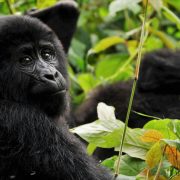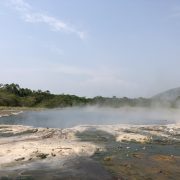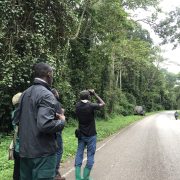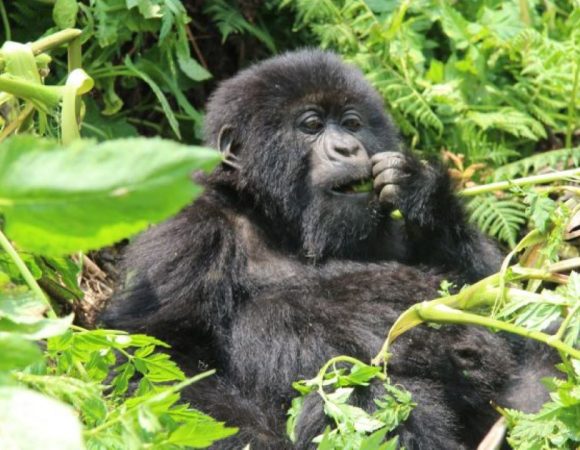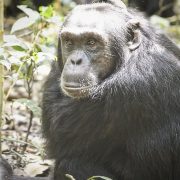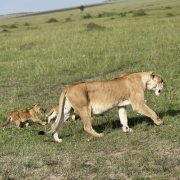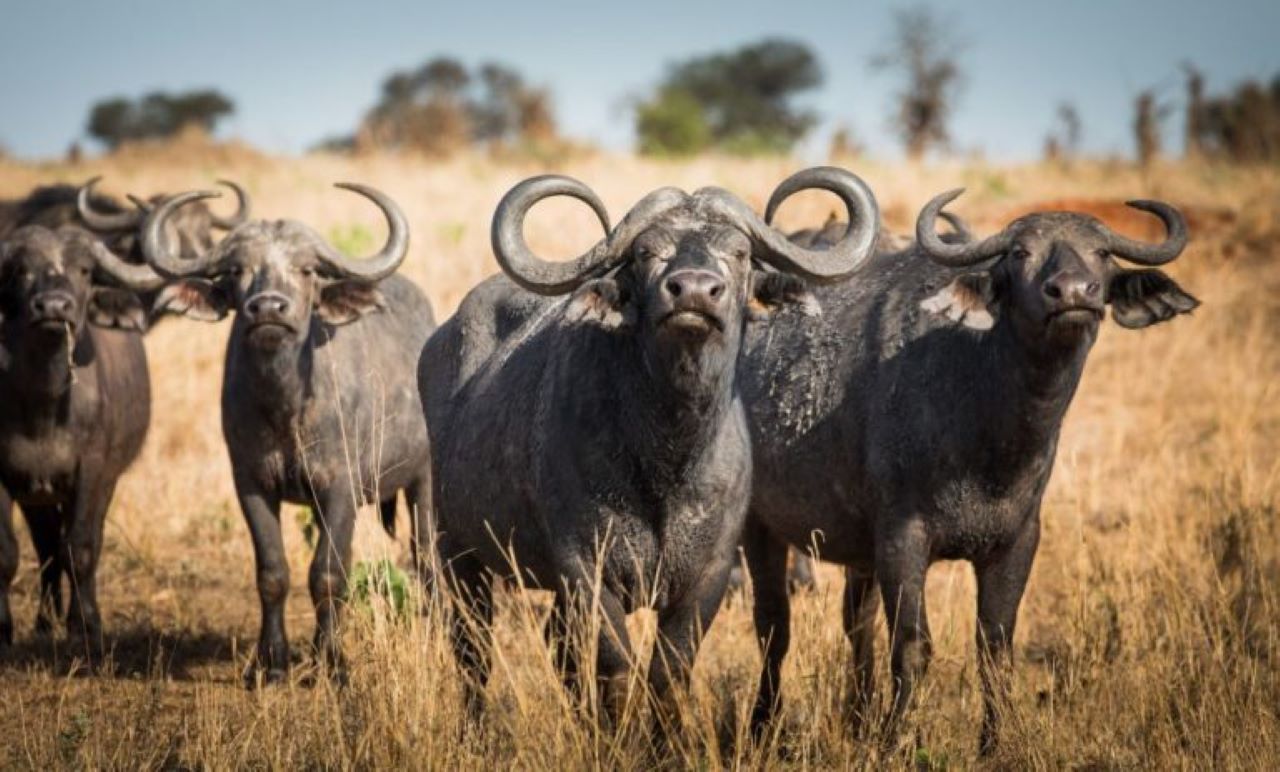
Lake Manyara National Park : Things to do in Lake Manyara National Park
Situated in the northern part of Tanzania, Lake Manyara National Park is one of the most beautiful parks in Tanzania. The national park covers an area of 330 square kilometers that encompasses diverse habitats, lush vegetation and abundant wildlife. Lake Manyara National Park is famously known for its tree climbing lions which are a stunning spectacle and aquatic birdlife that likes to forage at the shores of Lake Manyara. Ornithologists from around the world visit the national park throughout the year and are drawn to the park mostly by the abundant species of birds in Lake Manyara National Park.
Lake Manyara National Park lies between Lake Manyara and the Great Rift Valley hence offering stunning views across the escarpment and the alkaline Lake Manyara. An interesting fact about Lake Manyara is its shallow depth as it is about 3 meters deep hence during dry spells in Tanzania the lake can completely dry up. Lake Manyara National Park’s diversity include scarp forest that harbors species of primates, snakes and monitor lizards, open grassland where elephants are usually seen feeding and a section of Lake Manyara ( 200 sq km) which is part of the larger Lake Manyara Biosphere Reserve. The national park is a perfect destination while on safari in Tanzania as it offers fulfilling wildlife encounters in the midst of one of Tanzania’s most diverse parks.
Lake Manyara National Park Wildlife
Lake Manyara National Park is a wildlife haven as it has a great population of animals some are resident to the park and other are migratory animals from Tarangire National Park.
The park is home to large herds of wildebeest that are usually seen strolling and foraging in the park especially in the open grassland areas and near the scarp forest that is located near the park gate. Other animals in Lake Manyara National Park include Elephants, Tree-climbing Lions which are a major attraction in the park, Cape Buffalo, Zebras, Giraffes, Impalas, Blue monkeys, Olive baboons, Bush bucks, Klip springers, Water buck, Thomson’s gazelle, Warthogs, Grant’s gazelle, Cheetah, Spotted Hyena, Leopard, Honey badger, African Civet, African wild cat, Bat-eared fox, Serval , African golden cat, Mongoose, and Hippos that are best seen at the hippo pool in the northern section of the park. Cheetah, Leopard and African golden cat are occasional sightings and tend to be rarely sighted.
The national park is also home to species of reptiles like the Nile Monitor Lizard which is Africa’s longest lizard, non-venomous snakes that live in the forest often perched in trees hunting for invertebrates and venomous snakes like the green mamba.
Birds in Lake Manyara National Park
Lake Manyara National Park is a birding hot spot for keen bird watcher and ornithologists. Over 350 species of birds have been recorded at the park including raptor species, water birds, savanna and forest specials. Lake Manyara is known for attracting flocks of flamingos that feed on the lake shores during the wet season. Birds usually seen at the shores of Lake Manyara include Great white pelican, Yellow-billed stork and Pink-backed pelican.
Other birds in Lake Manyara National Park include Southern ground hornbill, Grey heron, Lilac-breasted roller, Palm-nut vulture, Marabou stork, Spotted crake, Red-throated pipit, Rufuous-tailed weaver, Malagasy pond heron, Lesser Kestrel, Ayre’s hawk eagle, Silvery-cheeked hornbill, Little bee-eater, Black heron, Superb starling, Von der Decken’s hornbill, Goliath Heron, Blacksmith Lapwing, African grey hornbill, Glossy Ibis, Martial eagle, African spoonbill, Hamerkop, Baglafecht weaver, African jacana, Little stint, Spur-winged goose, Comb duck, Pied Kingfisher, Pied avocet and Sacred ibis among other species. Lake Manyara is an Important Bird Area (IBA) and the park has an impressive diversity of habitats that support the presence of birds in the conservation area.
Vegetation of Lake Manyara National Park
One cannot talk about Lake Manyara National Park without mentioning the diverse vegetation types in the park. The vegetation is an integral part of the greater Eco system of Lake Manyara National Park and plays an important role in providing habitats and food for mammals, primates, reptiles and birds in the National Park. The vegetation types include thicket-woodland with deciduous shrubs and ever green succulent plants, acacia trees and large baobabs that are a famed attraction in the park. Scarp forest is also available close to the park gate and this is a main habitat for primates, birds and reptiles and the forest has perennial streams of water that drain from the plateau into Lake Manyara.
The park vegetation also includes swamp which is found at the north end of Lake Manyara where the Simba River and its tributaries enter the lake. The swamp is a habitat for water birds and papyrus inhabitants. Between Lake Manyara and the forest you find the open grasslands where large numbers of herbivores like to flock and forage. In addition Lake Manyara National Park hosts 670 flowering plant and fern species.
Activities to do while in Lake Manyara National Park
Game Drives in Lake Manyara National Park
Game drives are the top ways to have close encounters with the wildlife in the park. The best time to do the game drive is early morning as afternoon the park tends to be crowded with visitors just arriving in the park from areas like Arusha. However mid-morning and afternoon game drives are available and can be done its just you are likely to have a better experience early in the morning. Start out the game drive following animal tracks and trails as you look out for predators like lions, herbivores like elephants , birds of prey that are often seen scuffling for left over hunts from the cats, primates in the lush green forest and birds perched on tree branches and acacia tortilis. The game drive offers a great opportunity to catch the sunrise over the rift valley and the stunning alkaline Lake Manyara. Night game drives are also available at the park for a chance of seeing the nocturnal species.
Bird watching in Lake Manyara National Park
Being an Important Bird Area (IBA), Lake Manyara National Park offers great birding opportunities with the ability to tick off a variety of birds of prey, forest specials and water bird in a day. The park is a key attraction for specialist birders from across the world with interest in aquatic bird life and other species of birds in Lake Manyara. From raptor species to forest specials to large birds to savanna species, the park is a bird watcher’s paradise and worth adding to your birding in Tanzania safari.
Canoe Ride on Lake Manyara
A canoe ride on Lake Manyara is a great way to spend time in the park as you explore the aquatic life in and along the shores of the lake. The canoe ride offers great opportunities to see the large flocks of flamingos, pelicans and other water birds. You ride on the lake as you take in the expansive views of the national park and the rift valley escarpment. The canoe ride is also great for a close encounter with the aquatic life on Lake Manyara as the road that previously used to lead one to the shores of the lake has been closed for some time now so the canoe ride on Lake Manyara is your best bet for up close encounters with the lake inhabitants.
Tree Top Walkway
The treetop walkway is a top activity at the national park that takes place close to the park entrance. This is an alternative way to watch the lush green forest canopy in the park from a bird’s eye view. This activity is a must do while here as it takes one along the 370m / 1,200ft long airwalk suspending from a height of 18m/60ft atop the forest in Lake Manyara national park, an incredible safari experience!
Community Visit (Maasai People)
Outside the Lake Manyara conservation area you find the Maasai People, a popular ethnic group of Tanzania who are known for their indigenous cultural heritage and unique way of life. The Maasai are majorly pastoralists and live in circular manyattas made of mud and straw so a visit to a Maasai villages brings one closer to this group. While on the visit you have a chance to visit their home stead, indulge in their rich culture and even participate in their traditional dance.
Where to Stay in Lake Manyara National Park
Lake Manyara National Park has a number of accommodation facilities that one can consider to stay at while on safari in the national park. The accommodation facilities available and that we recommend include;
Lake Manyara Serena Safari Lodge: This is an upmarket lodge facility overlooking Lake Manyara with stunning views of the surrounding park vegetation. The lodge has a selection of en-suite rooms and suites with comfortable beddings, clean linen and beautiful African inspired décor. The lodge makes for a perfect base while on safari in Lake Manyara National Park with facilities that include a swimming pool, a well-stocked bar and a dining area serving delicious meals.
andBeyond Lake Manyara Tree Lodge: Nestled in an ancient mahogany forest this luxury lodge offers a visitor the perfect blend of tranquility and African safari encounter. The lodge has 10 stilted tree house suites with comfortable and warm interior perfect for a cosy night in the midst of Lake Manyara National Park. The luxury accommodation facility also features a stunning lodge pool, a massage parlour, a safari shop where you can pick up some souvenirs, a dining area serving scrumptious meals and a well-stocked bar area.
Lake Manyara Kilimamoja Lodge: This is a beautiful lodge that is one of the properties owned and run by Wellworth Collection. The safari lodge is situated at the edge of the Great African Rift Valley and is known for its stunning views of Lake Manyara and the lush vegetation of the Rift Valley and Mount Meru. The safari lodge features 50 deluxe rooms and 2 bedroom luxury villas making the lodge great for solo travelers, couples, large groups of travelers and families on safari together. All the rooms are en-suites and assembled with comfort ability for guests in mind.
Getting to Lake Manyara National Park
Lake Manyara National Park can be accessed by road or by taking a flight. The national park can be accessed by road from Arusha town in Tanzania which is equally known as the main base for the offset of safaris in Tanzania. The distance between Arusha town and Lake Manyara is 126 km and it takes about one and a half hours to get to the park gate. This makes it easily accessible from Arusha town and is a perfect destination for short trips in Tanzania. The park is part of the Northern Safari Circuit so a visit to the park can include visiting Serengeti National Park and the Ngorongoro Crater.
The park can alternatively be accessed by taking a charter flight from Arusha Airport (ARK) to Manyara’s airstrip and then be transferred to your lodge for the night. Charter flights are usually booked by your tour operator in Tanzania. Tanzania is accessed by flying into either Kilimanjaro International Airport (JRO) or Julius Nyerere International Airport (DAR).
Best time to visit Lake Manyara National Park
The park is open all throughout the year so visitors to the park can visit anytime of the year. The best time to visit Lake Manyara National Park is during the dry season that spans from months between June to October. The park is however equally stunning and beautiful during the months of November to May which is the wet season as it offers scenic views down the escarpment and the forest. The wet season is also perfect for birdwatchers especially in areas around Lake Manyara where large flocks of water and migratory birds are usually seen.

